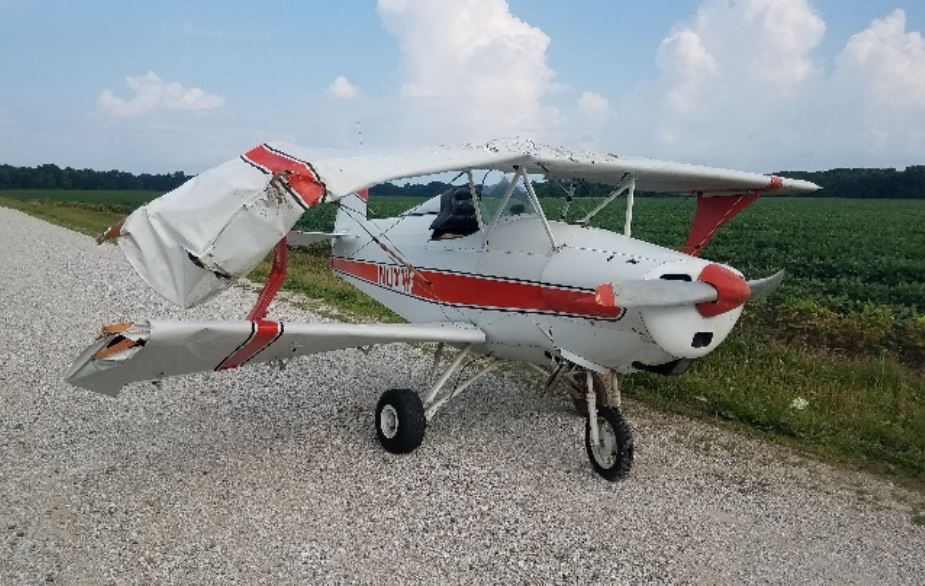
ASN Wikibase Occurrence # 226197
This information is added by users of ASN. Neither ASN nor the Flight Safety Foundation are responsible for the completeness or correctness of this information.
If you feel this information is incomplete or incorrect, you can submit corrected information.
| Date: | Wednesday 4 July 2018 |
| Time: | 08:35 |
| Type: | Smith Trike |
| Owner/operator: | Private |
| Registration: | N11VW |
| MSN: | 001RM |
| Year of manufacture: | 1991 |
| Total airframe hrs: | 72 hours |
| Engine model: | Continental A&C65 SERIES |
| Fatalities: | Fatalities: 0 / Occupants: 1 |
| Aircraft damage: | Substantial |
| Category: | Accident |
| Location: | Lewiston, IL -
 United States of America United States of America
|
| Phase: | Landing |
| Nature: | Private |
| Departure airport: | Springfield-Abraham Lincoln Capital Airport, IL (SPI/KSPI) |
| Monmouth, IL (C66) | |
| Investigating agency: | NTSB |
| Confidence Rating: |
The pilot reported that, during cruise flight into "wispy clouds," the biplane’s engine started to "run rough" then lost all power. About 800 ft above ground level, he restarted the engine, but it quit again. He attempted to restart the engine multiple times but was unsuccessful, so he selected a gravel road for landing. During the landing, the airplane ground looped into a ditch. The biplane sustained substantial damage to the right wing.
The pilot reported that there were no preaccident mechanical failures or malfunctions with the biplane that would have precluded normal operation.
The automated weather observation station located 25 nautical miles away from the accident site reported that, about the time of the accident, the wind was from 170° at 5 knots, visibility 7 statute miles, clouds broken at 4,800 ft above ground level, temperature 77°F, and dew point 75°F.
The pilot stated that he did not apply carburetor heat during the accident flight. The atmospheric conditions were conducive to serious icing at glide power settings. It is likely that the engine lost power due to carburetor icing and the pilot’s failure to apply carburetor heat.
Probable Cause: A total loss of engine power due to the pilot's failure to apply carburetor heat in conditions conducive to carburetor icing and his subsequent failure to maintain directional control during a forced landing.
Accident investigation:
 |
|
Sources:
NTSB
Location
Images:

Photo: FAA
Revision history:
| Date/time | Contributor | Updates |
|---|---|---|
| 15-Jun-2019 16:18 | ASN Update Bot | Added |
| 15-Jun-2019 16:54 | harro | Updated [Phase, Departure airport, Narrative, Photo] |
Corrections or additions? ... Edit this accident description
The Aviation Safety Network is an exclusive service provided by:


 ©2024 Flight Safety Foundation
©2024 Flight Safety Foundation